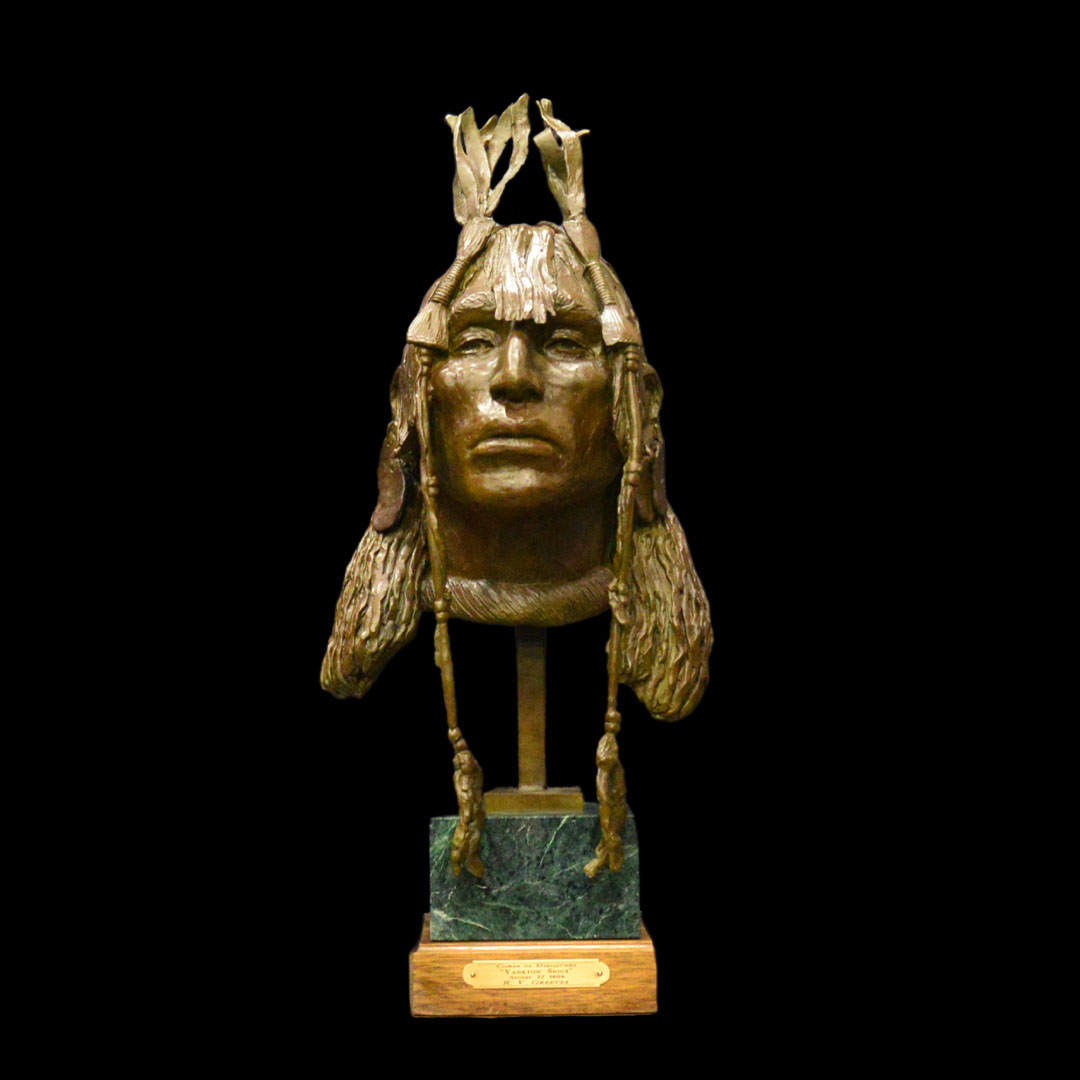He wore antlers not for show—but because the land had crowned him.
Richard Vernon Greeves
Contemporary

"Yankton Sioux – August 27, 1804” by Richard Vernon Greeves is a striking bronze bust that radiates strength, dignity, and ceremonial symbolism. The subject’s gaze is steady and unflinching, his expression carved with the hard-won pride of a warrior. Braided hair falls to each side, while twin antlers rise from his headdress—iconic, primal, and defiant.
The date marks one of the earliest formal councils between the Lewis and Clark expedition and the Yankton Sioux. But Greeves doesn’t depict a man preparing to meet strangers—he renders a leader whose authority was never in question. This is not diplomacy. This is presence.
The smooth facial planes contrast the wild textures of the headdress and braids, balancing regality with rawness. The green marble base lifts the figure like a monument, a reminder that what was encountered in 1804 wasn’t discovery—it was sovereignty.
A foundational piece for any serious collection rooted in Plains culture, historical reinterpretation, or fine bronze portraiture with sculptural edge and gravitas.